Fresh Flavor

How do I get that restaurant-quality flavor in my homemade crab cakes ?
How to Achieve Restaurant-Quality Flavor in Homemade Crab Cakes: - Freshness and quality of ingredients are crucial. - Lump crabmeat is preferred for its sweet flavor and good texture. - Use a combination of seasonings like Old Bay, mustard, Worcestershire sauce, and hot sauce. - Bind the mixture with mayonnaise or mustard lightly. - Pan-fry or oven-bake the crab cakes for different textures. - Serve with remoulade sauce and sides like green salad or roasted vegetables. - Allow the crab cakes to rest before cooking and avoid overcrowding the pan.

How do I prepare a perfect grilled fish ?
Grilling fish is a delightful culinary experience that can be perfected with the right preparation and process. Here's a step-by-step guide to help you achieve perfection every time you fire up the grill for your favorite fish: 1. **Preparation** - **Choosing the Right Fish**: Opt for fresh fish, aim for fillets that are at least 1-inch thick, and choose types of fish like salmon, sea bass, and swordfish that are great for grilling due to their natural fat content. - **Marination**: Decide on the flavor profile you want, marinate the fish for at least 30 minutes to an hour in the refrigerator, but be cautious not to leave it too long as the acid in the marinade can start to cook the fish. - **Grill Prep**: Ensure your grill is clean to avoid any unwanted flavors and lightly oil the grates to prevent sticking. 2. **Grilling Process** - **Preheating the Grill**: Preheat the grill to medium-high heat, ideal temperature range between 375°F to 450°F (190°C to 230°C). - **Cooking the Fish**: Place the fish skin side down on the grill, flip the fish only once, and use a wide spatula to carefully flip and remove the fish without breaking it. - **Checking for Doneness**: The flesh should turn from translucent to opaque and give a gentle poke; it should flake easily with a fork. 3. **Serving Suggestions** - **Lemon Wedges**: Serve with wedges of lemon to add a fresh citrus note. - **Herb Sauce**: Pair with a simple herb sauce or compound butter. - **Side Dishes**: Consider serving with grilled vegetables, a fresh salad, or roasted potatoes. By following these steps, you will be able to prepare a perfect grilled fish that is sure to impress your guests or simply satisfy your own cravings for a delicious meal. Enjoy the process and savor the flavor!
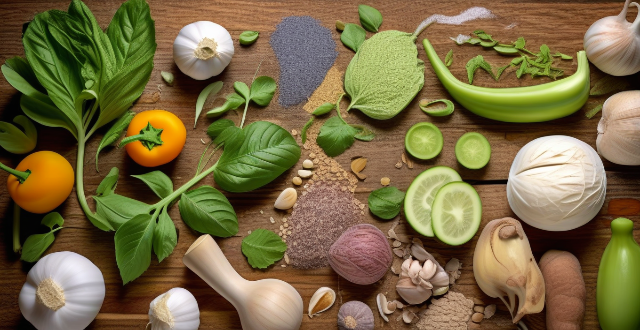
What ingredients are commonly used in Mexican cooking to create its unique flavor profile ?
The article provides an overview of the key ingredients used in Mexican cooking, including chili peppers like ancho, jalapeño, serrano, and habanero; herbs and spices such as cumin, coriander, oregano, and cilantro; and other ingredients like tomatoes, onions, garlic, lime juice, epazote, and hominy. It explains how these ingredients contribute to the distinctive flavor profile of Mexican cuisine and encourages readers to experiment with creating authentic Mexican meals at home.

What are some gluten-free breakfast options that don't sacrifice flavor ?
Gluten-Free Breakfast Options that Don't Sacrifice Flavor: Gluten-free pancakes, oatmeal with fruits and nuts, egg dishes, smoothies, gluten-free cereals, and breads are all delicious and healthy breakfast options for those who are gluten-free.

Is there a way to cook scallops without overcooking them ?
Scallops are a delightful seafood option that many people enjoy for their tender, sweet flavor. However, they can easily be overcooked, turning rubbery and tough. Here's a guide to help you cook scallops to perfection: 1. Choose fresh scallops and pat them dry before cooking. Moisture is the enemy of a good sear. 2. Pan-searing is the most common method, but grilling and baking are also options. Cook scallops over medium-high heat until golden crust forms, then flip and cook for another minute or two. 3. Timing is key - don't walk away from the stove and check for doneness when scallops are almost opaque with a slightly translucent center. 4. Let scallops rest for a minute or two after removing from heat to allow juices to redistribute. 5. Serve scallops with simple sides like lemon butter pasta or a fresh green salad, and garnish with fresh herbs such as parsley, chives, or mint for an added layer of flavor.

How can I make my breakfast more colorful and visually appealing ?
How to Make Your Breakfast More Colorful and Visually Appealing: 1. Use fresh fruits and vegetables for color and nutrition. 2. Experiment with different grains and breads for texture and color. 3. Add spices and herbs for flavor and color. 4. Get creative with plating for visual appeal. 5. Incorporate edible flowers for beauty and flavor.
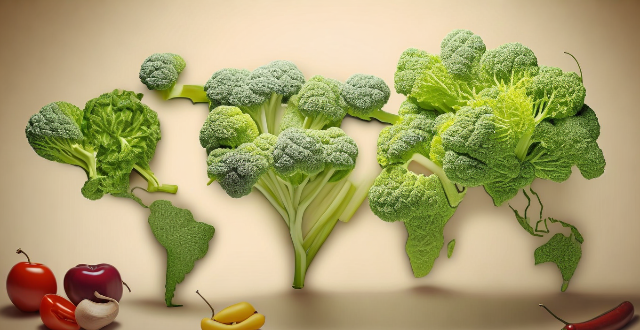
What role does cilantro play in Mexican cuisine in terms of flavor ?
Cilantro is a key herb in Mexican cuisine, adding flavor, aroma, and freshness to dishes. Its unique taste, described as citrusy, grassy, and slightly peppery, complements the bold and spicy flavors of Mexican cooking. Cilantro is used in salsas and guacamole, soups and stews, marinades and rubs, tacos and enchiladas. Its citrusy notes cut through rich ingredients, grassy undertones provide a refreshing contrast, and its peppery bite adds complexity. Cilantro is essential for enhancing the taste and aroma of Mexican dishes.
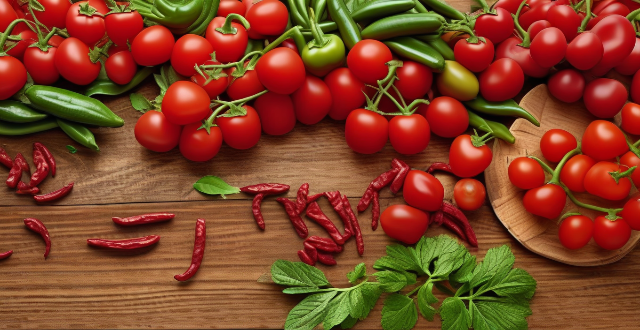
What are some traditional Mexican flavors ?
Mexican cuisine is known for its bold and vibrant flavors, which are a result of the country's rich history and diverse cultural influences. Some of the most traditional Mexican flavors include chili peppers, herbs and spices, fruits and vegetables, dairy products, and meats and seafood. These flavors come together to create the vibrant and delicious cuisine that Mexico is known for.

How can I make sure my paella has the right consistency and flavor ?
To ensure your paella has the right consistency and flavor, choose short-grain rice like Bomba or Calasparra, use fresh proteins and quality vegetables, cook with proper techniques including sofrito caramelization and correct liquid ratios, season well with salt and additional spices, let it rest before serving, and garnish with lemon wedges and parsley.

What's the best way to infuse alcohol with fruits or spices ?
Infusing alcohol with fruits or spices is a great way to add flavor and complexity to your drinks. Here are the steps to do it right: Materials Needed: - Alcohol of your choice (vodka, rum, gin, etc.) - Fresh or dried fruits/spices - Clean glass jar or bottle with a tight-fitting lid - Fine mesh strainer or cheesecloth - Funnel (optional) Steps to Infuse Alcohol: 1. Choose Your Ingredients: Pick high-quality fruits and spices that complement the flavor profile of your chosen alcohol. Popular combinations include vodka with citrus fruits or jalapeño, rum with tropical fruits or cinnamon, and gin with juniper berries or lavender. 2. Prepare Your Ingredients: Wash and chop fresh fruits into small pieces. For spices, use whole spices like cinnamon sticks or crush them slightly to release more flavor. Dried fruits can be used as they are. 3. Infusion Process: Fill your clean glass jar or bottle with the prepared fruits/spices, leaving about 1/4 of the container empty at the top. Pour in the alcohol until the fruits/spices are fully submerged. 4. Seal and Shake: Close the jar tightly and shake well. Store it in a cool, dark place, shaking it occasionally over the next few days to help release the flavors. 5. Taste Testing: After about 3-5 days, taste your infusion. If it's not strong enough, reseal and let it sit for a few more days. The longer it sits, the more intense the flavor will become. 6. Straining and Bottling: When you're satisfied with the flavor, strain the mixture through a fine mesh strainer or cheesecloth into a clean jar or bottle. Use a funnel to transfer it without spilling. 7. Enjoy! Your homemade infused alcohol is now ready to be enjoyed in various cocktails or served neat over ice. Remember, the quality of your ingredients matters greatly. Always use fresh fruits and high-quality alcohol for the best results. Cheers!
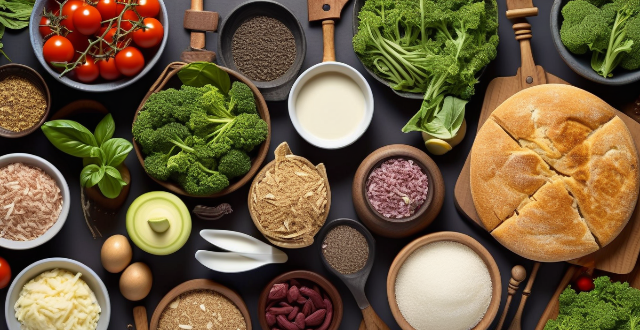
How can I spice up my usual home-cooked meals with new flavors ?
To spice up your usual home-cooked meals, try using fresh herbs and spices, exploring global flavors, incorporating acids and sweetness, and adding textures and garnishes.

What makes the flavor of street tacos in Mexico different from those found elsewhere ?
The flavor of street tacos in Mexico differs from others due to authentic ingredients, traditional cooking methods, regional specialties, vibrant street food culture, and a variety of condiments.

How do Mexican spices and seasonings combine to create their iconic flavors ?
**Mexican Spices and Seasonings: A Flavorful Fusion** Mexican cuisine is renowned for its vibrant flavors, derived from a mix of spices and seasonings that reflect the country's rich history and cultural diversity. These ingredients add depth and character to dishes, creating iconic Mexican flavors through careful combination and layering. Key components include chili peppers like ancho, poblano, jalapeño, serrano, and habanero; herbs such as cilantro, epazote, and marjoram; aromatics like onions, garlic, and tomatoes; dried spices including cumin, coriander seed, cinnamon, and clove; and condiments like lime juice, salt, and peppercorns. The signature flavor is created by layering heat and sweetness, balancing herbal notes, building depth with aromatics, enriching with dried spices, and finishing with acidity and salt. This intricate blend of flavors makes Mexican food beloved worldwide.

What are some tips for balancing sweet and sour flavors in cocktails ?
"Balancing Sweet and Sour Flavors in Cocktails: Tips and Tricks for Crafting Perfect Drinks"
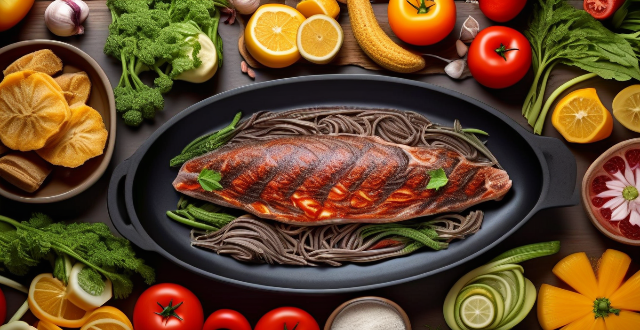
How does the use of chilies contribute to the distinctive taste of Mexican food ?
Chilies play a pivotal role in Mexican cuisine, contributing heat, flavor complexity, color, and cultural significance. They offer varying intensities of spiciness, from mild to very hot, and their fruity or earthy flavors complement other ingredients. Visually appealing with vibrant colors, chilies also have nutritional benefits like antioxidants and metabolism boost. They are versatile in cooking, used fresh, dried, or smoked, and pair well with acidic and herbal ingredients. Chilies are integral to traditional dishes like enchiladas and mole sauce, showcasing their essential role in defining the unique taste profile of Mexican food.

How do you describe the taste of authentic Mexican cuisine ?
Mexican cuisine is a vibrant and complex blend of flavors that can be both bold and subtle. Here are some key characteristics that describe the taste of authentic Mexican food: ### Spicy Heat Chili peppers and spices like cumin, oregano, and cinnamon add depth of flavor to many dishes. ### Acidity and Tanginess Lime juice and tomatoes provide refreshing acidity and tanginess, while also contributing sweetness. ### Earthy and Nutty Flavors Beans, corn, and nuts offer earthy undertones and richness to Mexican cooking. ### Sweetness and Fruitiness Fruits such as pineapple and mango, as well as vegetables like sweet potatoes, bring a touch of sweetness to savory dishes. ### Umami Richness Cheese and slow-cooked meats contribute deep, savory flavors to Mexican cuisine. ### Herbaceous Notes Cilantro and epazote provide distinctive, fresh flavors that are essential in traditional cooking. ### Texture Variety Crunchy vegetables and creamy avocado-based sauces offer a range of textures that balance spicier elements. ### Bold and Aromatic Garnishes Onions and cilantro are often used as garnishes, adding sharpness and freshness to dishes. Overall, authentic Mexican cuisine is a harmonious combination of spicy, tangy, sweet, umami, herbaceous, and textural elements that create a complex and satisfying gustatory experience.

How do I properly season my stir-fry dishes ?
When it comes to stir-fry dishes, seasoning is key to achieving that perfect balance of flavors. Here are some tips on how to properly season your stir-fry dishes: 1. Choose the right ingredients: Select fresh vegetables and proteins that will complement each other in terms of flavor and texture. 2. Use a variety of sauces and spices: Experiment with different sauces and spices to find the perfect combination for your dish. 3. Balance sweet, sour, salty, and spicy flavors: A good stir-fry should have a balance of these four flavors. 4. Cook in batches and use high heat: Cook your ingredients in batches over high heat to ensure even cooking and maximum flavor. 5. Taste and adjust as needed: Taste your stir-fry as you go and adjust the seasoning as needed.

How can I make drinks look more appealing with garnishes ?
Garnishing drinks is an art form that can elevate the visual appeal of your beverages. It not only enhances the aesthetic but also adds flavor and aroma to your drink. In this guide, we will explore various techniques and ideas to make your drinks look more appealing with garnishes. Importance of Garnishes: Garnishes add visual appeal, enhance flavor and aroma, and create theme and ambiance. Garnish Ideas: Fruit garnishes like slices and wedges, herb garnishes like sprigs and leafy toppers, spice garnishes like cinnamon sticks and star anise, edible flowers such as pansy or viola, and miscellaneous garnishes like cocktail picks and salt rims. Techniques for Applying Garnishes: Rim treatments like wet rims and layered effects, floating garnishes like fruit slices and edible flowers, and skewered garnishes like combination skewers and visual balance. By incorporating various types of garnishes and employing different techniques, you can significantly enhance the visual appeal of your drinks. Remember to consider factors such as color, texture, and flavor when selecting garnishes to create a cohesive and attractive presentation. With these tips, you'll be able to elevate any beverage from ordinary to extraordinary in no time!
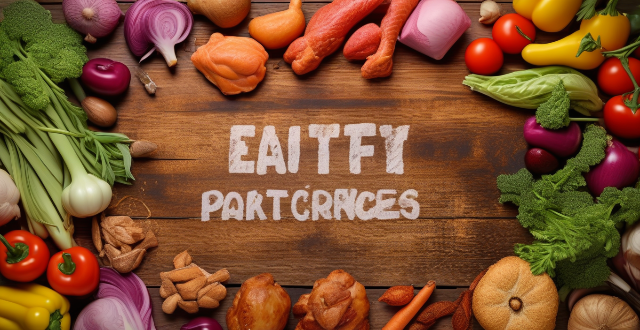
Can you suggest any easy-to-make lunch box recipes ?
The text provides a list of easy-to-make lunch box recipes. The first recipe is for grilled chicken and vegetable skewers, which involves marinating chicken breasts in a favorite sauce, cutting vegetables into large chunks, threading them onto skewers, and grilling until cooked through. The second recipe is for hummus and veggie wrap, which involves spreading hummus on a whole wheat tortilla, adding sliced cucumbers, carrots, and bell peppers, rolling up tightly, and slicing in half. The third recipe is for tuna salad lettuce wraps, which involves mixing canned tuna with mayo, lemon juice, and chopped celery, spooning the mixture onto lettuce leaves, and rolling up. The fourth recipe is for quinoa salad, which involves cooking quinoa according to package instructions, tossing with chopped tomatoes, cucumbers, feta cheese, and a simple vinaigrette, and packing in a container with pita chips or crackers. The fifth recipe is for egg salad sandwich, which involves hard boiling eggs, chopping them up, mixing with mayo, mustard, salt, and pepper, and serving on whole grain bread with lettuce and tomato. The sixth recipe is for Caprese salad, which involves slicing fresh mozzarella and tomatoes, drizzling with olive oil and balsamic vinegar, adding fresh basil leaves, and seasoning with salt and pepper. The seventh recipe is for turkey and cheese roll-ups, which involves laying out slices of turkey and cheese on a slice of bread, rolling up tightly, and slicing into bite-sized pieces. The eighth recipe is for Greek yogurt parfait, which involves layering Greek yogurt, granola, and fresh fruit in a jar or container, and topping with honey or maple syrup if desired. The ninth recipe is for black bean and corn salad, which involves rinsing and draining a can of black beans, mixing with canned corn, diced red onion, cherry tomatoes, and a lime vinaigrette, and serving chilled with tortilla chips or crackers. The tenth recipe is for avocado toast, which involves mashing an avocado with lime juice and salt, spreading on toasted whole grain bread, and topping with everything bagel seasoning or red pepper flakes for extra flavor.
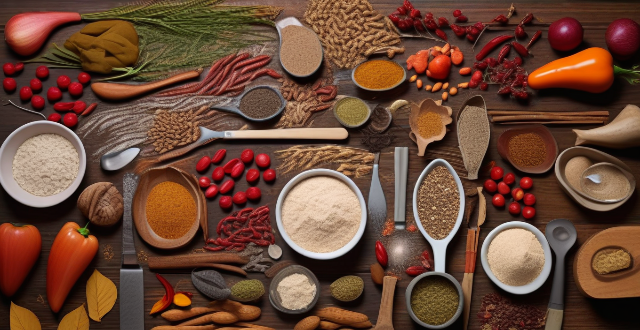
What is the significance of spices in Indian cooking ?
The significance of spices in Indian cooking is multifaceted, encompassing flavor enhancement, cultural traditions, and medicinal benefits. Key spices like turmeric, cumin, coriander, mustard seeds, fenugreek, red chili powder, garam masala, curry leaves, asafoetida, and tamarind contribute to the complex flavor profiles characteristic of Indian cuisine. These spices are used through techniques such as tempering, grinding, and roasting to create a balance of tastes and visual appeal. Historically, spices were valuable commodities in trade and are integral to traditional medicine and religious practices. Regional variations in spice use reflect India's diverse geography and cultural heritage. Understanding the nuances of spice usage allows for a deeper appreciation of the artistry behind Indian dishes.
![What are the best places to eat like a local in [insert city/country] ?](/images/2kge/2befbfac-8832-4928-9125-7d71418d7604.png)
What are the best places to eat like a local in [insert city/country] ?
In this guide, we explore the best places to eat like a local in [insert city/country], from street food vendors and hole-in-the-wall restaurants to bustling markets and bazaars. These spots offer authentic flavors and a taste of the local culture, making them must-visit destinations for anyone looking to truly experience the local cuisine. Whether you're in the mood for fresh seafood or bold flavors, there's sure to be something that satisfies your cravings. So come hungry and get ready to indulge in some delicious local fare!

How can I incorporate more plant-based meals into my family's diet ?
Incorporating more plant-based meals into your family's diet can lead to improved health, weight management, and a reduced environmental impact. Here's how to do it: 1. **Understand the Benefits**: Improved health, weight management, and environmental sustainability are key advantages of a plant-based diet. 2. **Gradual Transition**: Start by replacing one or two meals per week with plant-based options to ease your family into the change. 3. **Meal Ideas**: Try Meatless Mondays, vegetable-centric dinners, and incorporating plant-based proteins like tofu and beans. 4. **Involve Your Family**: Get your family excited about the change by letting them choose recipes and shop for ingredients. 5. **Shopping Tips**: Buy fresh produce, stock up on staples like grains and legumes, and experiment with new foods. 6. **Education and Resources**: Use online resources like websites, YouTube channels, and cookbooks to learn about plant-based eating. 7. **Meal Planning and Preparation**: Plan weekly meals, consider batch cooking, and get creative with leftovers. 8. **Emphasize Flavor and Creativity**: Use herbs, spices, marinades, and sauces to add flavor, and don't be afraid to experiment with different cooking techniques.
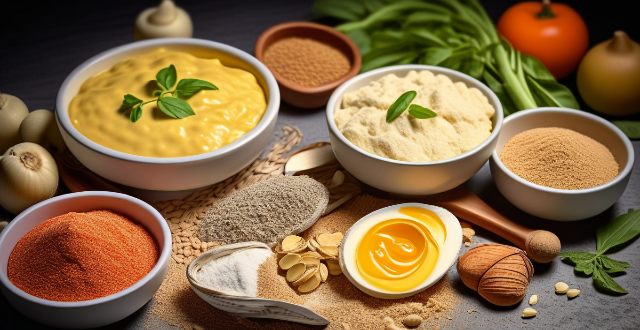
What are the key ingredients in Indian cooking ?
Indian cuisine is known for its rich flavors and diverse dishes. The key ingredients that make Indian cooking unique are spices, herbs, ghee, lentils, rice, yogurt, nuts and seeds, and bread. These ingredients add flavor, color, and aroma to the dishes and create authentic and delicious Indian cuisine.

Can you explain the concept of umami in Japanese cooking ?
Umami is one of the five basic tastes, along with sweet, sour, salty, and bitter. It is often described as a savory or meaty taste, and is commonly found in foods such as mushrooms, soy sauce, and aged cheeses. In Japanese cooking, umami is considered an essential flavor profile that adds depth and complexity to dishes. The science of umami is caused by the presence of glutamate, a type of amino acid, in food. When we eat foods that contain glutamate, it stimulates our taste buds and sends signals to our brain that register as a distinct taste. This taste is often associated with protein-rich foods like meat, fish, and vegetables. In Japanese cuisine, umami is used to enhance the flavors of dishes and create a more complex taste profile. Some common ingredients that are high in umami include miso (fermented soybean paste), dashi (Japanese broth made from dried fish and seaweed), soy sauce, dried shiitake mushrooms, and kombu (a type of seaweed). Umami is used in a variety of ways in Japanese cooking. For example, miso soup is made by mixing miso paste with dashi broth to create a savory soup that is often served as part of a traditional Japanese breakfast. Sushi combines vinegared rice, fresh fish, and soy sauce to create a perfect balance of flavors that includes umami. Ramen noodles use a broth made with chicken or pork bones, which are rich in umami. Teppanyaki involves grilling meat and vegetables on a hot plate, which helps to release their natural umami flavors. In conclusion, umami is an important flavor profile in Japanese cooking that adds depth and complexity to dishes. By using ingredients that are high in glutamate, chefs can create dishes that are both delicious and satisfying.

How does Chinese cuisine differ from other Asian cuisines ?
Chinese cuisine is one of the most diverse and influential cuisines in the world, with a history that spans thousands of years. While there are many similarities between Chinese cuisine and other Asian cuisines, there are also several key differences that set it apart. These differences include the use of ingredients, cooking techniques, flavor profiles, and regional variations within each cuisine. Chinese cuisine often uses a wider variety of ingredients than other Asian cuisines, including both meat and vegetables. Additionally, Chinese cuisine often incorporates more spices and herbs into its dishes than other Asian cuisines. Another difference is the cooking techniques used. Chinese cuisine often involves stir-frying or steaming foods, while other Asian cuisines may rely more heavily on grilling or baking. Chinese cuisine also tends to use woks for cooking, which allows for high heat and quick cooking times. In terms of flavor profiles, Chinese cuisine has a distinct flavor profile that sets it apart from other Asian cuisines. Chinese cuisine often features bold flavors such as garlic, ginger, soy sauce, and chili peppers. In contrast, Japanese cuisine may have a lighter, more delicate flavor profile that emphasizes umami (savory) flavors. Thai cuisine, on the other hand, may be spicier and more aromatic than Chinese cuisine. Finally, another difference between Chinese cuisine and other Asian cuisines is the regional variations within each cuisine. China has a vast geographic area with many different regions, each with its own unique culinary traditions. Similarly, Japanese cuisine can vary greatly depending on whether it comes from the northern or southern regions of Japan.

Why is French cuisine, including desserts, considered among the finest in the world ?
French cuisine, including desserts, is renowned worldwide for its exquisite flavors, meticulous preparation, and artistic presentation. This reputation is due to factors such as historical significance, quality ingredients, artisanal methods, chef training, innovation, and attention to detail. French cuisine has a long history dating back to medieval times when it was influenced by various cultural invasions and trades. Over centuries, French chefs refined their techniques, creating a rich culinary tradition that emphasizes depth of flavor and precision in cooking methods. French cuisine places a high value on using fresh, high-quality ingredients, often sourced locally. The variety of ingredients available in different regions of France allows for a wide array of dishes and flavors. French baking traditions, such as those used in making croissants and baguettes, involve complex processes that yield exceptional results. Many French desserts, like macarons and éclairs, are handcrafted with care, ensuring each piece is of the highest quality. France is home to some of the best culinary schools in the world, where future chefs receive rigorous training. Young chefs often learn from experienced masters through apprenticeships, preserving techniques and recipes. French chefs are known for their innovative approaches to traditional dishes, pushing the boundaries of gastronomy. The integration of international flavors into classic French dishes keeps the cuisine dynamic and exciting. French cuisine emphasizes not just taste but also the visual appeal of the dish, making every meal an experience. The emphasis on all senses—smell, sight, taste, touch, and even sound—creates a comprehensive dining experience.

How can I make my favorite dishes vegetarian without sacrificing flavor ?
How to Make Your Favorite Dishes Vegetarian Without Sacrificing Flavor

What kind of ingredients are commonly used in Japanese cuisine ?
Japanese cuisine is known for its unique flavors, fresh ingredients, and beautiful presentation. The most commonly used ingredients in Japanese cooking include white rice, brown rice, sweet rice, tuna, salmon, squid, shellfish, chicken, beef, pork, cabbage, eggplant, green onions, mushrooms, soy sauce, miso, udon noodles, soba noodles, ramen noodles, rice vinegar, sesame oil, nori, wasabi, and pickled ginger. These ingredients combine to create the diverse and delicious flavors that make Japanese cuisine so beloved around the world.